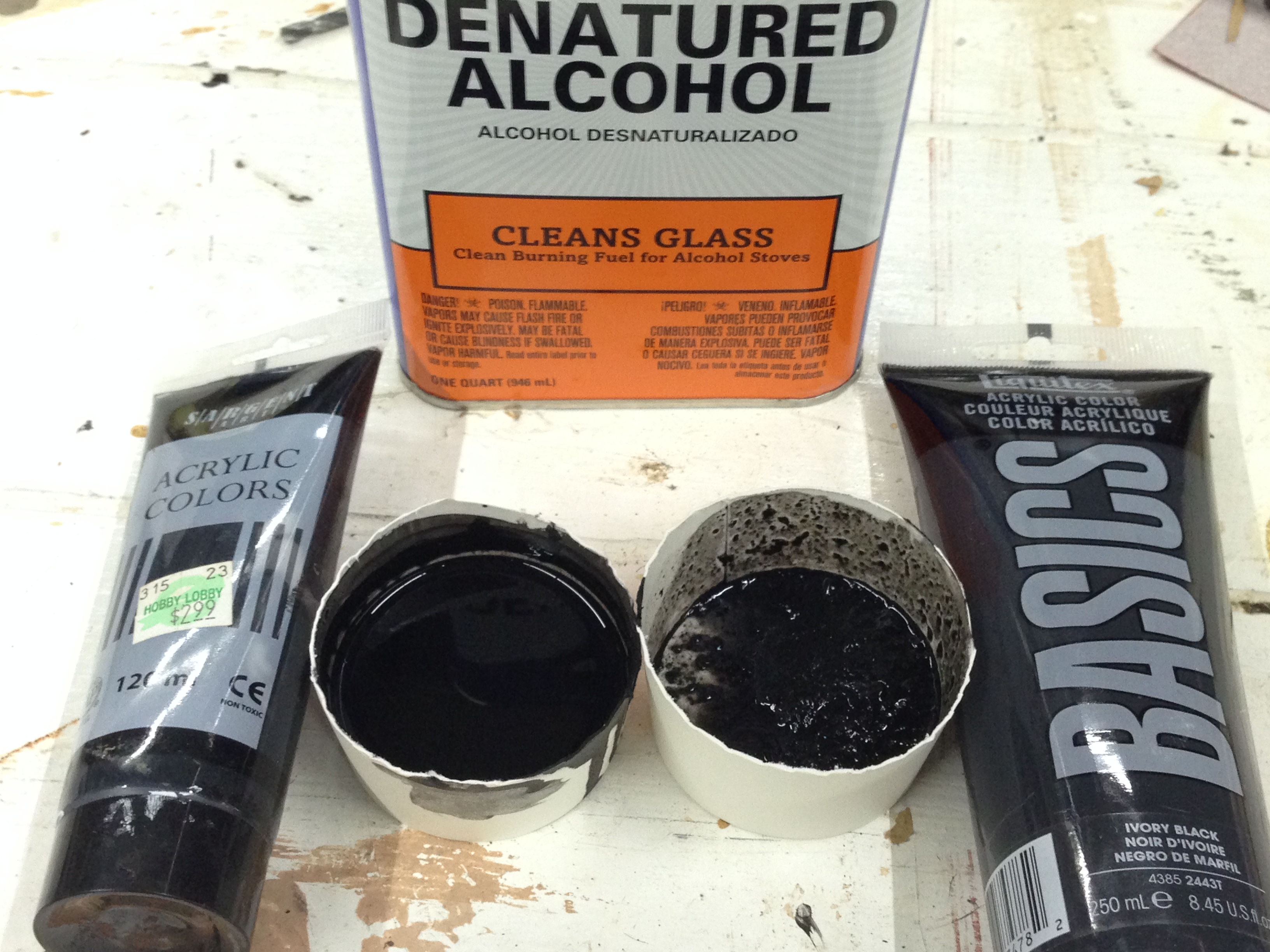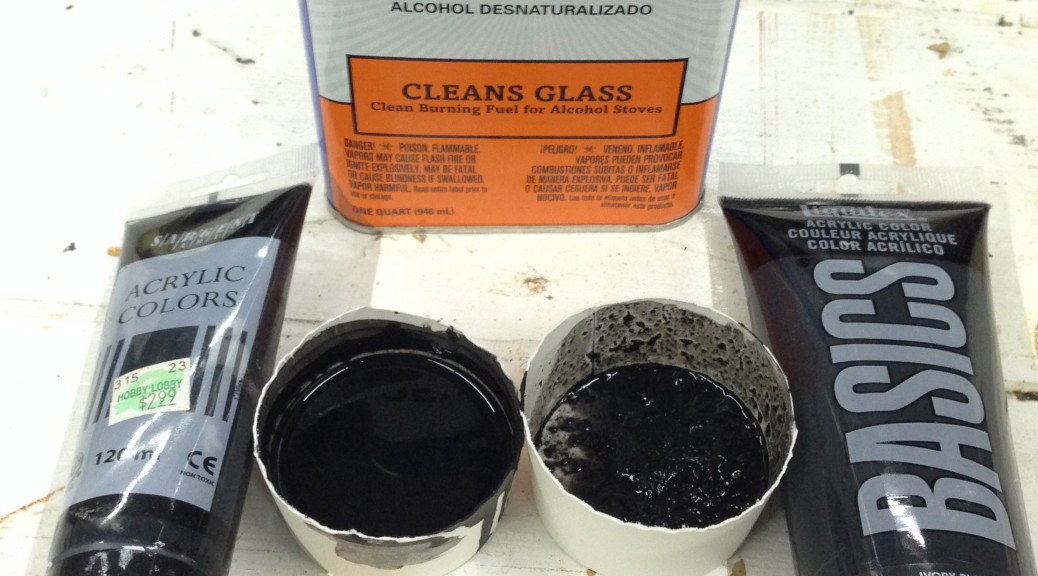I was recently weathering a prop I’m working on. To get some grime and age on it, I decided to thin some black acrylic paint down with denatured alcohol to make a wash. I had two types of black acrylic paint laying around: Sargent and Liquitex.
They are both pretty cheap, share the same pigments, have similar consistencies, and dry to the same color. So they should be exactly the same, right?

As you can see in the photo above, the Liquitex immediately clumped up when I began to mix it with alcohol; it turned to little globs and flakes that refused to blend in with the rest of the liquid. The Sargent on the other hand blended easily into the alcohol, making a silky smooth wash that was ready to distress my prop.
Now don’t get me wrong, I use the Liquitex paints all the time; it’s great to have a range of colors ready to go to touch up a prop or add a spot of color. But it’s obviously not made to be thinned. Some paints are better at being thinned, some mix better with other colors, some have purer pigments. Paints have a whole bunch of ingredients in them that make them act differently than each other, even within the broad categories of “acrylic” or “oil” or “lacquer”.
This is why your scenic artist favors scenic paints for certain tasks over hardware store paint. Sure, you can get some similar colors, but when it comes to mixing colors, making glazes, or just thinning them down, the cheaper hardware store paint often turns to crud.






The Liquitex Basics are not necessarily the “best” paint in the liquitex line since they are not as highly pigmented and priced to be affordable for the student and the hobbyist that still want a quality acrylic, but why thin with alcohol? Why not water? While thinning with water isn’t recommended with acrylic because it decreases the effectiveness of the binders and the pigments to bond properly I would imagine alcohol thinning doesn’t preserve these bonds any better. These acrylics are water based, not alcohol based, so they are meant to work with water and probably thin down quite a bit with the water. I’m not trying to judge. I’m just curious on the alcohol thinning logic. I’ve been a scenic painter and prop builder for a number of years and I’ve never seen anyone thin with alcohol. I have tinted alcohol with pure pigment tints to create some washy and marbling effects, but that was more alcohol than it was paint. I’d be interested in hearing about this technique if you have time to spare an answer. Thanks!
Hi Angie,
Thanks for the information. This is actually the first time I’ve tried thinning acrylic paint with alcohol. I’ve tried thinning them with water in the past to make washes, but they always seem to bead up on smoother surfaces, or dry too quickly. I read on a number of model making forums to try thinning with alcohol (either isopropyl or denatured), and it seems to have made it act more like a glaze, giving me a longer working time and wiping away easily. I don’t really know the science behind it, and I’m sure that different brands of acrylic paint will act differently. All I can guess is that since denatured alcohol does not contain water, it does not decrease the effectiveness of the binders. But again, this is my first time trying the technique.